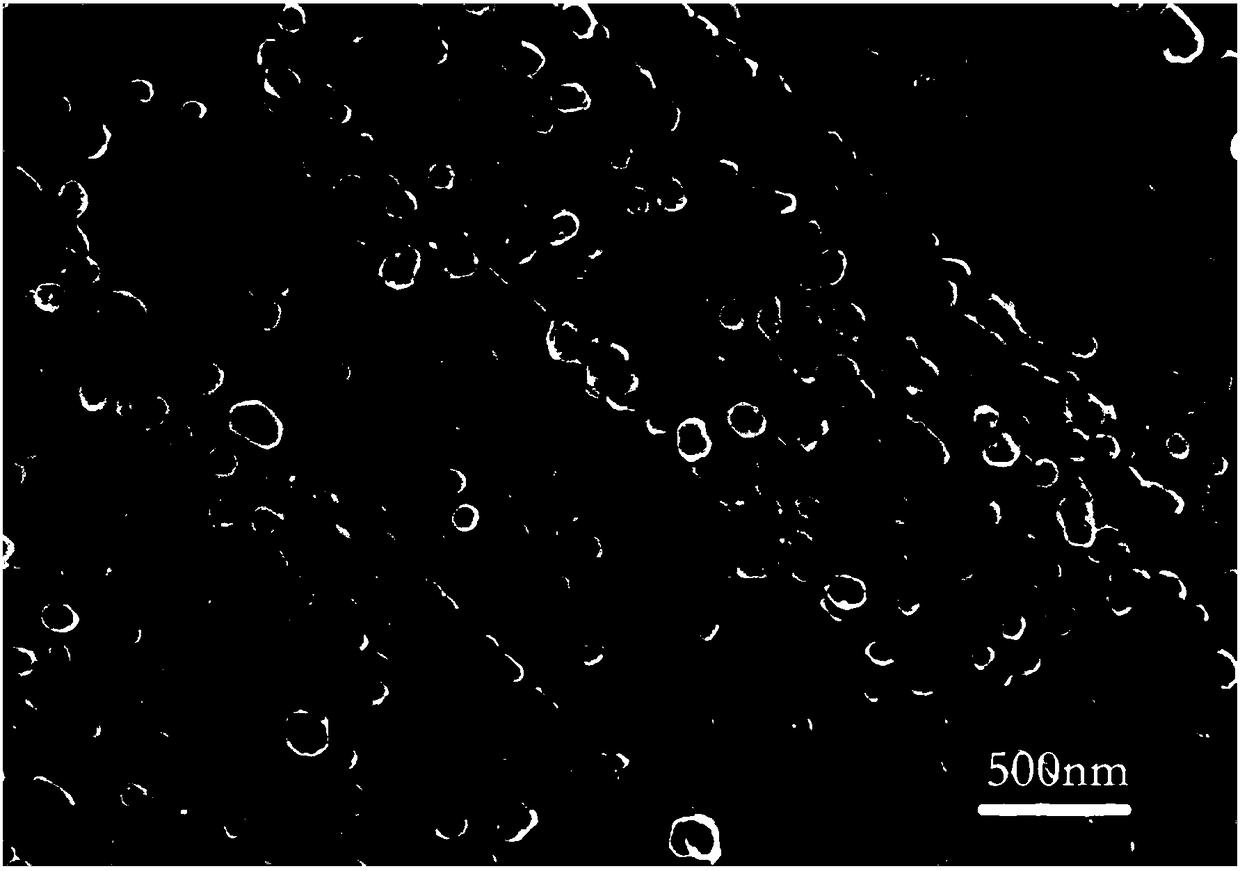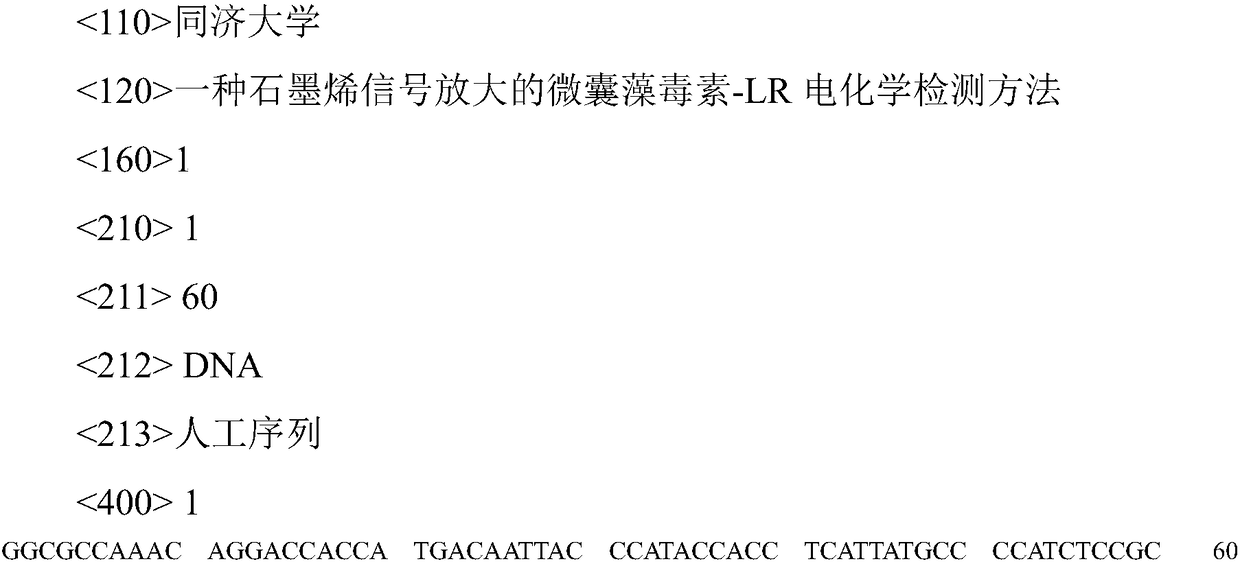A kind of graphene signal amplification microcystin-lr electrochemical detection method
A technology of microcystin and signal amplification, applied in the direction of material electrochemical variables, measuring devices, scientific instruments, etc., can solve the problems of complex process, high cost and cycle, and achieve good electrical conductivity, multiple electrochemical active areas, sensitive The effect of the electrochemical signal
- Summary
- Abstract
- Description
- Claims
- Application Information
AI Technical Summary
Problems solved by technology
Method used
Image
Examples
Embodiment 1
[0033] A microcystin-LR electrochemical detection method for graphene signal amplification, wherein the specific manufacturing process of the sensor involved is as follows:
[0034](1) First, the gold electrode is pretreated, and the treatment method is as follows: the surface of the gold electrode is placed on a freshly configured piranha (H 2 SO 4 / H 2 o 2 =7:3v / v) Soak in the lotion for 10-15 minutes, take it out and wash it with ultra-pure water, and then use aluminum oxide with a particle size of 1.0μm, 0.3μm, and 0.05μm in the word "8" Sand carefully to a smooth finish. Afterwards, the aluminum oxide on the surface of the electrode was rinsed with ultrapure water, and the electrode was placed in ultrapure water, ethanol, and ultrapure water for 5 to 10 minutes of ultrasonication. After the ultrasound is completed, take out the electrode immediately, use it as the working electrode, the platinum wire electrode as the counter electrode, and the SCE as the reference ele...
Embodiment 2
[0038] Before measuring the concentration of MC-LR, the prepared MCH / Au NPs / Au electrode was taken out, and 10 μL of endonuclease (DNase I) reaction buffer (pH=7.0, containing 100 mmol / L NaCl), 5 μL graphene-aptamer complex, 3 μL MC-LR of the concentration to be tested, 2 μL DNase I solution (1000 U / mL), and place the electrode in a biochemical incubator at 30 ° C for one hour take out. Gently rinse the electrode surface with ethanol and ultrapure water to remove weakly bound graphene. The electrodes were then dried under a nitrogen atmosphere and taken out for DPV detection. The electrochemical detection was carried out in 20 mmol / L phosphate buffer solution (pH=7.0) containing 5 mmol / L ferrocenecarboxylic acid and 0.1 mol / L sodium perchlorate.
[0039] The change of current and the concentration of MC-LR at 1.0×10 -12 ~1.0×10 -10 In the range of mol / L, there is a good linear relationship, and the correlation coefficient is about 0.99. The lowest detection limit is 8.0×10...
Embodiment 3
[0041] The prepared electrochemical aptasensor was mixed with 1.0×10 -11 mol / L MC-LR respectively with a concentration of 1.0×10 -9 The mol / L interfering substances were mixed in pairs for determination. The interference experiments of three common environmental pollutants, omethoate, glyphosate, paraquat, monosultap, acetamiprid and trichlorfon, on the determination of MC-LR were investigated. Using the test conditions in Example 2 to measure the current response, the research results show that the impact of other interfering substances with a concentration 100 times that of MC-LR on the current of MC-LR is less than 10.0%. It can be seen that the prepared aptasensor has high selectivity to MC-LR.
PUM
 Login to View More
Login to View More Abstract
Description
Claims
Application Information
 Login to View More
Login to View More - R&D
- Intellectual Property
- Life Sciences
- Materials
- Tech Scout
- Unparalleled Data Quality
- Higher Quality Content
- 60% Fewer Hallucinations
Browse by: Latest US Patents, China's latest patents, Technical Efficacy Thesaurus, Application Domain, Technology Topic, Popular Technical Reports.
© 2025 PatSnap. All rights reserved.Legal|Privacy policy|Modern Slavery Act Transparency Statement|Sitemap|About US| Contact US: help@patsnap.com



